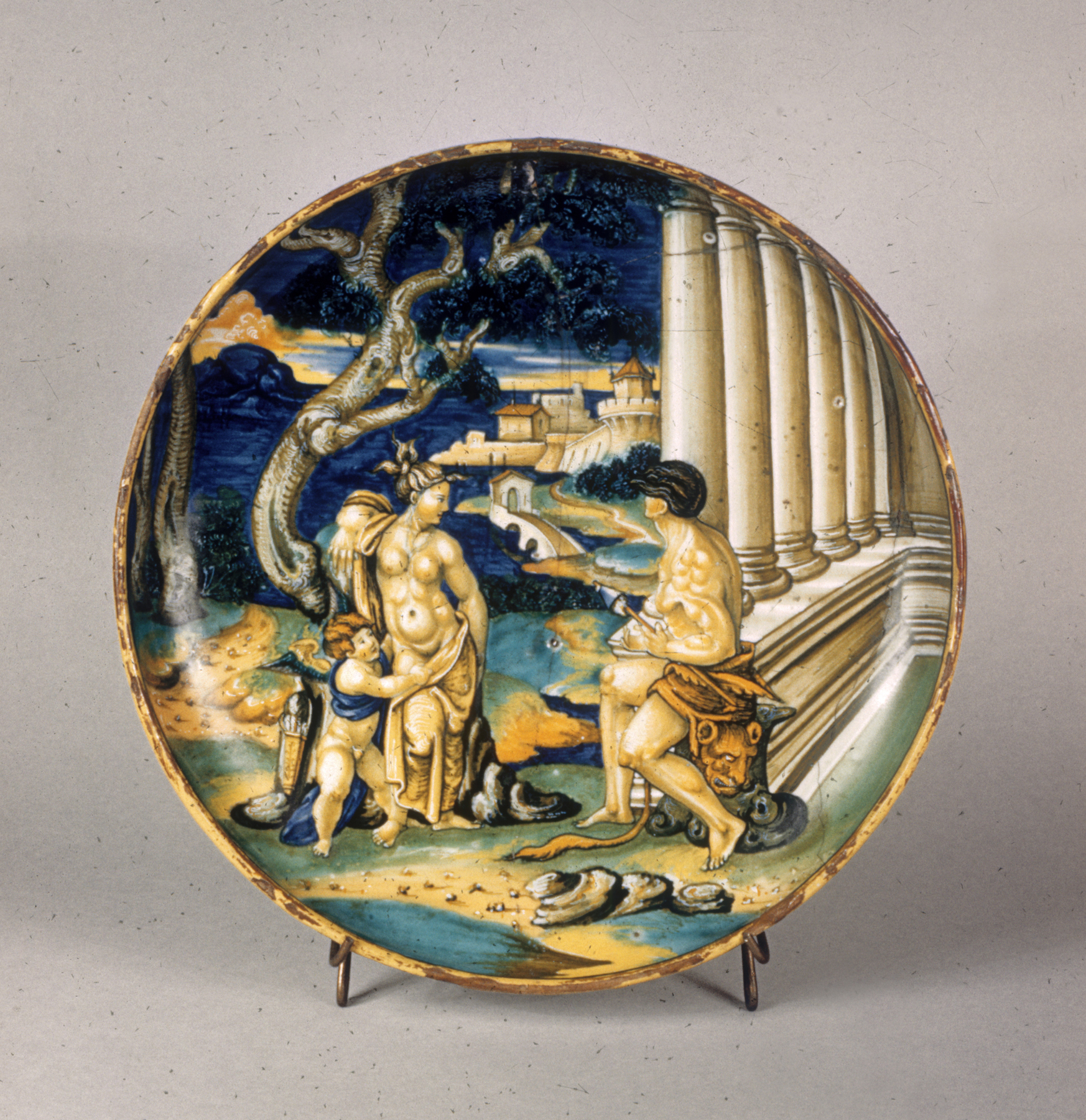Dish with Hercules and Omphale
(Renaissance Europe )
This maiolica (Italian tin-glazed earthenware) istoriato (story telling) dish shows Hercules, the Classical strongman and invincible hero, seated at the right before a receding colonnade and identified by his muscular body and the lion skin at his waist. To atone for his rage-driven murder of a friend, he became the slave and then lover of Omphale, the beautiful queen of Lydia, who stands nearly nude by a tree at left and is accompanied by Cupid, god of love. Demonstrating that love is more powerful than physical strength, Omphale made Hercules shed his military trappings for more feminine accessories, like the distaff tool for spinning that he holds here.
For the figure of Hercules, the artist Francesco Xanto Avelli, appears to have been inspired by two engravings by Marcantonio Raimondi (1475 – 1530). An inscription on the back wrongly identifies Omphale as Hercules’s wife, Deianira. Inscriptions were often applied by an assistant unfamiliar with the scene. For more on Xanto Avelli see no. 48.1373 and for further examples of his work, click on the artist's name in the "creator" field. For more on maiolica, see 48.1336; for more on istoriato ware see no. 48.1487Inscription
Provenance
Provenance (from the French provenir, 'to come from/forth') is the chronology of the ownership, custody, or location of a historical object. Learn more about provenance at the Walters.
Henry Walters, Baltimore [date and mode of acquisition unknown]; Walters Art Museum, 1931, by bequest.
Geographies
Italy, Gubbio
(Place of Origin)
Italy, Urbino (Place of Origin)
Measurements
2 5/16 x 10 11/16 in. (5.9 x 27.1 cm)
Credit Line
Acquired by Henry Walters
Location in Museum
Accession Number
In libraries, galleries, museums, and archives, an accession number is a unique identifier assigned to each object in the collection.
In libraries, galleries, museums, and archives, an accession number is a unique identifier assigned to each object in the collection.
48.1344




